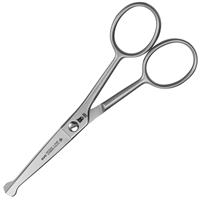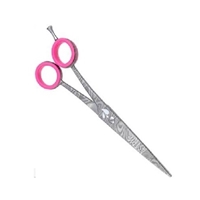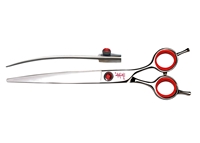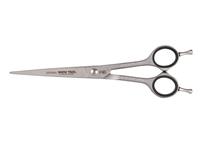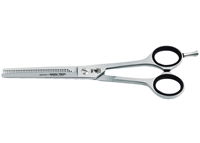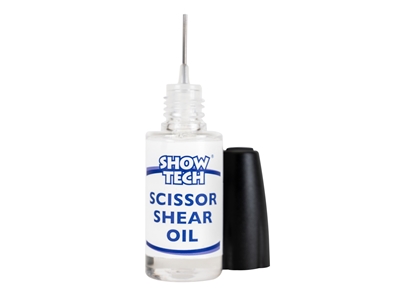Scissors
When selecting pet grooming scissors, it's essential to consider the type of cut, blade design, and material quality to ensure precision and durability. Here's an overview of various scissor types.
Types of Pet Grooming Scissors:
- Thinning Scissors: These scissors have teeth on one or both blades, allowing for the removal of bulk and blending of different hair lengths, resulting in a natural finish.
- Chunkers: Featuring fewer, wider teeth, chunkers are ideal for shaping and texturizing, enabling groomers to remove more hair with each cut.
- Ball Tip Scissors: Designed with rounded tips, these scissors enhance safety, especially when working around sensitive areas like the face and paws.
- Curved Scissors: The curved blades facilitate the shaping of rounded areas, such as the top of the head or around the legs, providing a smooth, contoured cut.
Show Tech Scissor & Shear Oil 10ml
Scissors that are regularly used have a lot to endure. Hair, moisture and chemicals get stuck between the blades when cutting your dog’s hair. On top of that, the friction of the constantly moving blades can cause the scissors to squeak. This means that your scissors or shears no longer work as well as they should and that the screws and the scissors need oil.
Well-oiled grooming
Daily used scissors should also be oiled on a daily basis. To properly oil and to protect your valuable tools, we’ve designed the Show Tech Scissor & Shear Oil.
Use instructions
Before oiling, it is recommended to first remove all the hairs from the scissors.
After scissoring for on average 20 minutes, use a soft hairbrush like the Show Tech Sher Clean Brush to remove the excess hair from the blades.
Put a drop of oil on the pivot point near the screw on both sides. Make a few cutting movements with the scissors after oiling them. Always remove any excess oil left on the blades with a tissue to prevent soiling the dog’s clean coat. Do not use just any oil–only use special scissor oil!
Scissors
Filter by:
Clear All
